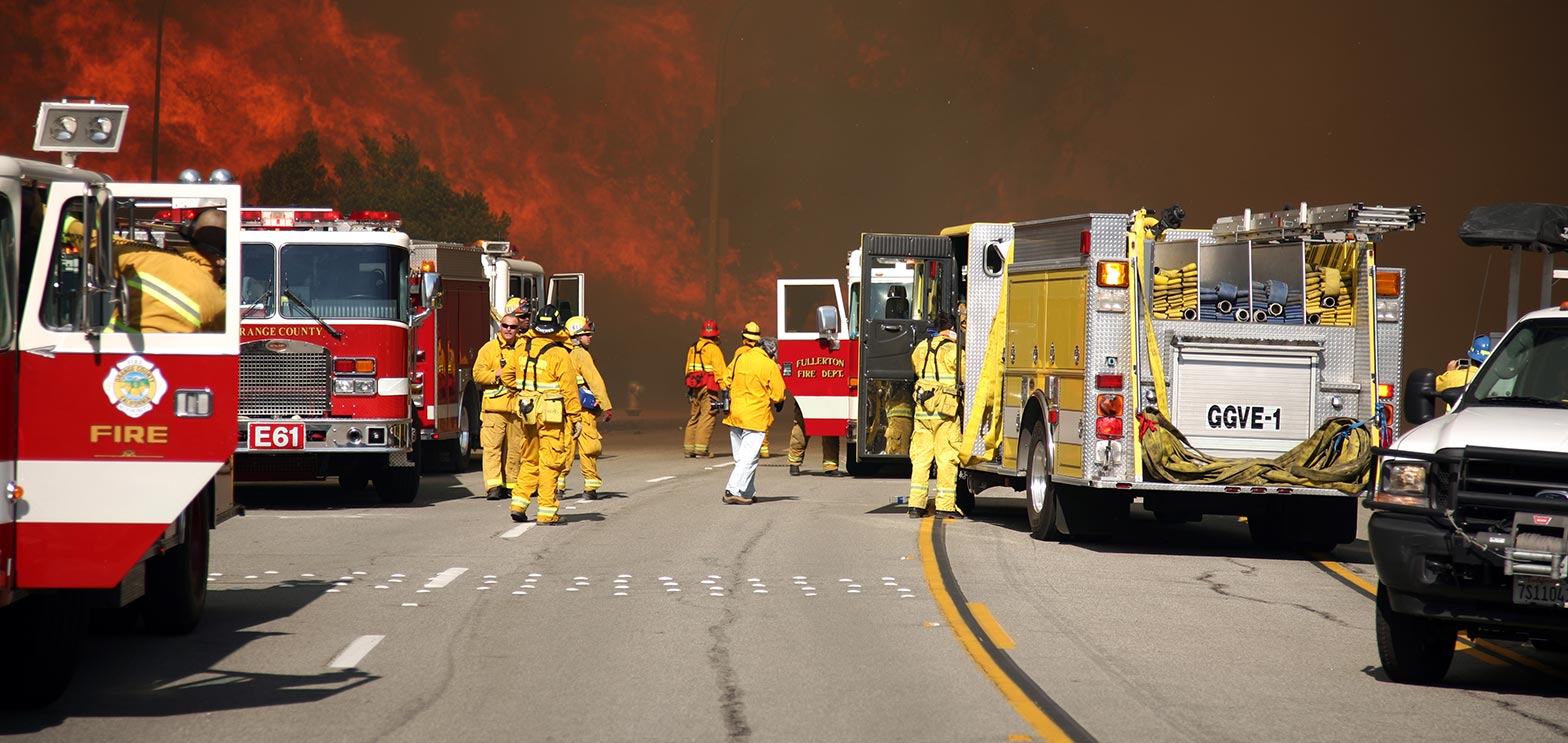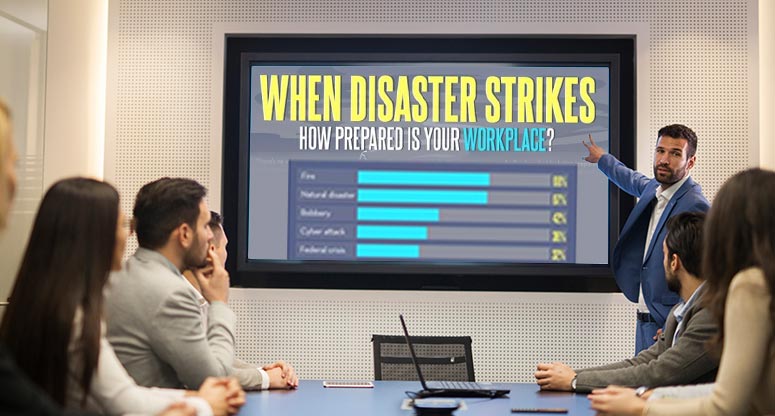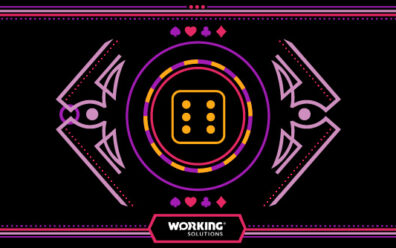Contact-Center Outsourcing Customer Experience10 Minute Read
Is Your Business Disaster Recovery Plan Ready?
How Can BPOs Support Businesses During Disaster Recovery Operations?
Disaster can strike at anytime, anywhere, so how do you prepare for the unexpected? No one is immune, whether it be a natural disaster or a manmade chemical spill. Maybe it’s a global pandemic or a breakdown in cybersecurity.

The best way to protect your business is to have a crisis plan in place, have confidence your team understands their priorities, and communicate to stakeholders and customers so you are all operating from the same playbook.
If you need to adjust based on the situation, your ability to move quickly is heightened by having a disaster plan already available to your teams and customers. At a time when the scope of disasters is constantly escalating, revisit your recovery plan to ensure it is still up to the task of protecting your business when it really matters.
While there’s no way to be 100% sure, there are a few questions you can ask to make sure you’re still standing on solid ground.
4 Questions to Make Sure Your Business Disaster Recovery Plan Is Up to the Task
1. Have You Updated Your Risk Analysis?
The foundation for any business disaster recovery plan is a risk analysis, designed to give you as clear an image as possible of the most immediate threats in your geographical vicinity. This involves determining the disasters that may affect the communities in which you operate, as well as the disruptions that those events could cause to your business and customers.

A business analysis report involves determining the potential communities in which you operate, as well as the disruption.
Source: www.shutterstock.com.
On a surface level, every region generally understands the specific risks it faces, be they geological in nature (earthquakes), weather-related (hurricanes and tornadoes) or a combination of the two. Some of these events can be anticipated more than others; yet all of them can be prepared for, in some capacity.
So, take another look at your risk analysis, paying close attention to:
- Updated threats based on the activity that’s occurred in your community in recent years.
- Varying scope of severity these events may have and the likely impact afterward.
- Specific amount of warning time you may have in the case of any of these events.
- Likelihood of back-to-back events that could compound the level of risk.
Action Item: A risk analysis is too important to be done casually, or to be left static. We recommend seeking out an expert to help you update your risk analysis on a yearly basis.
2. Are Your Facilities Fully Prepared and Up-to-date?

Office buildings, contact centers, warehouses, data centers—any buildings that could be susceptible to damage from a natural disaster.
Source: www.shutterstock.com.
Office buildings, contact centers, warehouses, data centers—any buildings that could be susceptible to damage from a natural disaster.
Source: www.shutterstock.com.[/caption]
To this end, your business disaster recovery plan should include periodic assessments of the quality of safety precautions in your physical facilities. They should include alarm systems, fire-and-smoke detection, water sealing, cooling and ventilation, and other essential elements. You also should ensure you’ve got a backup power source to keep critical systems up and running during outages.
For businesses with a wide enough scope of operations, it’s also wise to ensure that any data centers and call centers are—in addition to being as secured as possible against natural disasters—physically dispersed to spread out the risk of damage. This is the best way to prevent data loss or the inability to communicate with clients and their customers during critical times.
Action Item: Undertake a professional assessment of your facilities to ensure they’re fully up to code in terms of disaster preparedness. Then, schedule a follow-up for six months in the future. Refresh and repeat.
3. Is Your Data Back-up Plan Up-to-date?

With a data back-up plan you should be able to transfer your tech footprint to another location in another area without any loss of information or operational capacity for your business.
Source: www.shutterstock.com.
So, whether you own and operate your tech infrastructure or source it to a third party, it’s imperative to make sure there’s a backup plan in place. You should be able to transfer your tech footprint to another location in another area without any loss of information or operational capacity for your business—and be able to do so with little to no downtime.
Action item: Even if you manage your own tech infrastructure, consider enlisting the assistance of a third party that can offer a true expert assessment of your backup plan, as well as a full range of options to help you get a functional backup plan in place.
4. Have You Recently Vetted Your Vendors?
Action Item: Consult all your vendors to make sure they have business disaster recovery plans in place. Also, make a point of asking for this information from all new vendors.
How Can Customer Service BPOs Support Businesses during Disaster Recovery operations?
In times of catastrophe, uninterrupted communication is crucial for any business to continue its operations. When it comes to disaster recovery operations, Customer Service BPOs can play a significant role in supporting businesses by quickly becoming a pivotal point in maintaining an active line of communication between the clients and the company. Timely and consistent communication can alleviate uncertainty and help reestablish operations.
5 ways a BPO can help support Businesses during Disaster recovery operations
By outsourcing customer service requirements to a trusted partner, businesses can ensure that their customers receive quality customer service even in challenging times. Here are 6 ways outsourcing your customer service can help during disaster recovery operations.
- Customer Support Services:
During disasters, customer support is essential as customers may need assistance with their orders or have queries regarding the business’s service availability. Customer service outsourcing providers can offer 24/7 customer support services through various channels like phone, email, or chat ensuring prompt resolution of customer queries while maintaining brand reputation.
- Data Backup & Recovery:
Disasters can result in data loss which can be catastrophic for businesses. Trusted customer service providers offer cloud-based data backup solutions that enable automatic backup of critical business data ensuring quick recovery post-disaster scenarios without any data loss.
- Remote Access Support:
During disasters, employees may not be able to access office infrastructure, which leads to work disruptions, productivity loss, and revenue impacts. An outsourcing provider can offer remote access support through virtual private networks (VPNs) or other secure channels enabling employees to continue working remotely while maintaining security protocols required by the organization.
- Human Resource Management:
When disasters result in displaced employees, BPOs can assist with human resource management tasks such as payroll processing and benefits administration ensuring that employees are taken care of during these difficult times and reducing any potential legal risks faced by employers.
- Social Media Monitoring:
Social media platforms are an integral part of modern communication channels used widely during natural disasters sharing information related to emergency response measures as well as updates about business continuity plans being implemented. A customer service BPO can provide social media monitoring services enabling real-time analysis of social media conversations around disaster response efforts and informing businesses about the potential impact on their operations thus helping them make informed decisions quickly.
Need Help with Your Business Disaster Recovery Plan? Call the Experts.
Ready to protect your contact center from unexpected disasters? We’re here to help. With 27 years of experience helping businesses prepare for disruptions of all shapes and sizes, Working Solutions can offer the expertise you need to ensure your disaster plan is truly up to speed.
Need to ensure continuous customer service? Call the experts.
Let's Connect →
This Might Interest You...
This website uses cookies to personalize and improve your experience. Continue browsing our site if you agree to our Cookie Policy or feel free to Manage Cookies yourself.


